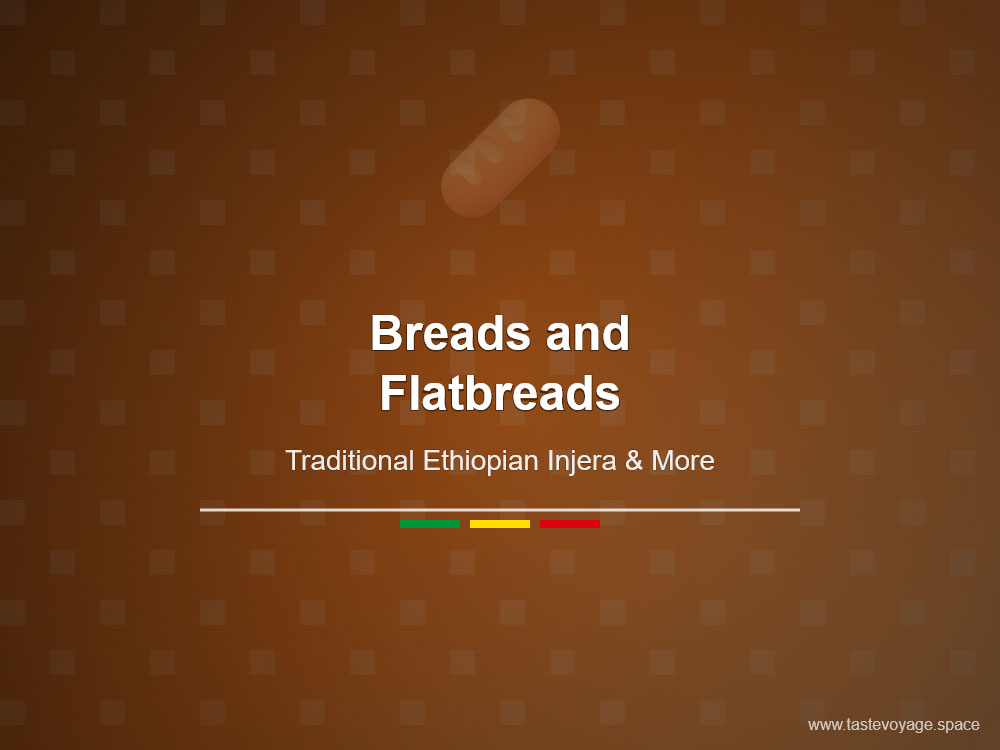Authentic Ethiopian Barley Flatbread Recipe | Easy & Delicious
Travel the World Through Food >> Breads and Flatbreads>>Ethiopian Cuisine>> Authentic Ethiopian Barley Flatbread Recipe | Easy & Delicious
Authentic Ethiopian Barley Flatbread Recipe | Easy & Delicious
Discovering the Rich Heritage of Ethiopian Barley Flatbread
Ethiopian barley flatbread is a timeless staple that beautifully represents Ethiopia’s rich culinary tradition. Known locally as “Injera” when made with teff, or simply as flatbread when prepared with barley, this dish embodies centuries of cultural significance. Its simple ingredients and unique preparation methods highlight the importance of grains in Ethiopian Cuisine and showcase the art of bread-making as a cherished communal activity.
A Cultural Symbol of Unity and Tradition
In Ethiopian society, flatbread serves more than just a nourishing meal; it symbolizes unity and shared tradition. These breads are often the centerpiece of communal gatherings, family feasts, and religious celebrations. The act of breaking bread together fosters bonds and emphasizes hospitality, warmth, and community spirit. The cultural value of barley flatbread extends beyond the table, reflecting Ethiopia’s deep-rooted appreciation for tradition, history, and social harmony.
Culinary Significance and Unique Characteristics
Barley, one of Ethiopia’s ancient grains, has been cultivated for thousands of years. Its resilience and nutritional benefits make it a vital ingredient in Ethiopian cuisine. The barley flatbread offers a hearty, slightly nutty flavor that complements a wide variety of traditional Stews and vegetable dishes. Its texture is often soft yet resilient, making it a perfect accompaniment for scooping up flavorful sauces and spices.
What sets this flatbread apart is its preparation process, which often involves fermenting the dough. This fermentation not only enhances the flavor but also reflects a time-honored technique that connects generations. The resulting bread is often thin and pliable, ideal for wrapping or sharing among friends and family.
The Artistic Touch in Preparation
Ethiopian culinary practices celebrate simplicity and craftsmanship. Making barley flatbread requires skill, patience, and an understanding of natural fermentation. The process often involves mixing barley flour with water and allowing the dough to ferment overnight, developing a tangy flavor profile. The flatbread is then shaped and cooked on a traditional griddle, giving it its characteristic texture and appearance.
This artistry highlights the importance of preserving culinary heritage. Each flatbread is a testament to Ethiopian culinary ingenuity and respect for natural ingredients. Its preparation is a communal activity that brings people together, fostering a sense of pride and cultural identity.
Embracing Ethiopian Flatbread in Modern Cuisine
Today, Ethiopian barley flatbread continues to be a beloved food that connects people to their roots. Chefs and home cooks alike celebrate its versatility and cultural richness. It serves as an invitation to explore Ethiopia’s culinary landscape and appreciate the significance of traditional grains in fostering health and community.
Whether enjoyed as part of a traditional meal or reimagined in contemporary dishes, this flatbread embodies a story of resilience, community, and heritage. It invites everyone to experience a taste of Ethiopia’s vibrant food culture and to honor the enduring legacy of its culinary artistry.
Conclusion
Ethiopian barley flatbread stands as a testament to Ethiopia’s rich tradition of grains, craftsmanship, and communal life. Its cultural value extends beyond sustenance, representing unity and shared history. Embracing this humble yet profound dish allows us to celebrate Ethiopia’s culinary artistry and the timeless beauty of traditional bread-making. Discovering and appreciating this flatbread can deepen our understanding of Ethiopia’s vibrant food culture and the enduring significance of its culinary heritage.
